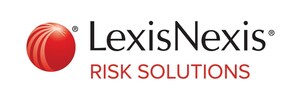ATLANTA, March 22, 2017 /PRNewswire/ -- New automotive claims research released today by LexisNexis Risk Solutions, "The Future of Claims: Touchless Claims Study," found that while some carriers continue to favor traditional claims processes, the demand for faster cycle times, reduced expenses and improved customer satisfaction is driving increased automation and an eventual migration from virtual to touchless claims. The implementation of data analytics and automation are becoming ubiquitous across industries as a solution for greater business efficiencies, and the latest LexisNexis study reveals that the auto insurance industry is no exception. LexisNexis Risk Solutions conducted in-depth interviews with 24 senior-level insurance executives about the integration of automation into their claims processing workflow, and found that 79 percent of the senior-level insurance executives recognized the importance of increasing auto claims automation as a critical or top priority.
The Roadmap to Touchless Claims
While the majority of insurance carrier respondents have adopted 'Fast Track' workflows that leverage outside damage assessments to expedite cycle times, carriers still rely heavily on traditional claims processes which require manual inspections, multiple touches and in-field adjusters. However, the need for increased claims efficiency, including faster cycle times, and lowered Loss Adjustment Expenses (LAE), coupled with the continued evolution of technology, has motivated some carriers to begin implementing Virtual Handling of claims. By utilizing technology-based inspections to enable remote assessments and processing, Virtual Handling has already proven successful. LexisNexis Risk Solutions found that 38 percent of respondents are currently using Virtual Handling, and 67 percent of those carriers are open to the adoption of end-to-end technology-based processing or Touchless Handling.
Based on study results, below is the proven success of the evolution of automated claims processes:
| Claims Processes |
Cycle Time |
Number of Touches |
| Traditional |
10-15 days |
3-4 touches |
| Fast Track |
4-6 days |
2 touches |
| Virtual Handling |
2-3 days |
1-2 touches |
| Touchless Handling |
1 day |
0 – 1 touches |
This research from LexisNexis Risk Solutions indicates that despite the proven benefits of a more automated claims process, many of the senior-level insurance executives interviewed indicated reservations about further automating non-complex claims due to concerns over increased fraud, decreased customer interaction and claims inaccuracy. In addition, there are cultural barriers and technology restraints that currently hinder widespread Virtual Handling adoption. However, despite unilateral adoption of automated claims processing in every carrier segment, the ongoing implementation of automated processes is inevitable, the trends are clear and the benefits for consumers can be realized.
"As technology, coupled with data and analytics, has powered the claims evolution from Traditional to Fast Track, and most recently to Virtual Handling, we wanted to look ahead to better understand the future of claims handling," said Bill Brower, Vice President, Claims, LexisNexis Risk Solutions. "Due to adoption barriers, we recognize this is not something that is going to happen overnight, however, we feel that current technology, coupled with data and analytics, positions the industry to adopt Touchless Handling as the future of non-complex auto claims. There are already tangible benefits from automation that we are seeing today as Virtual Handling has reduced cycle times by 80 percent while significantly reducing touches."
The Future of Touchless Claims
According to the respondents, Virtual Handling is not only chosen to increase efficiencies and decrease cost, but also to enhance the customer experience. As tech-savvy millennials continue to gravitate towards self-service options, it is expected that over the next several years mobile claims reporting will expand, and self-service claims options will continue to increase. Carriers also predict that self-service for claims adjudication will be led by larger, standard carriers who have the resources to invest in technology and who will benefit to a greater degree from process efficiencies because of their large claims volume. Claims experts from LexisNexis also see benefits for smaller, regional carriers who focus efforts on improving the personalized customer experience.
All senior-level insurance executives interviewed also foresee telematics playing an increased role in claims investigations within the next several years, as telematics automatically provides information that can further simplify and accelerate claims processing. According to the study, insurance carriers that have instituted Virtual Handling have overcome barriers relating to a mix of business culture and technology constraints.
Regardless of where carriers are positioned on the continuum of automated claims processing, the trend towards virtual – and eventually touchless – claims is inevitable, but should be approached with the customer experience in mind. The industry is moving toward more automated claims handling processes driven by technology-enabled solutions that yield benefits for both carriers and customers.
About LexisNexis Risk Solutions
At LexisNexis Risk Solutions, we believe in the power of data and advanced analytics for better risk management. With over 40 years of expertise, we are the trusted data analytics provider for organizations seeking actionable insights to manage risks and improve results while upholding the highest standards for security and privacy. Headquartered in metro Atlanta, USA, LexisNexis Risk Solutions serves customers in more than 100 countries and is part of RELX Group plc, a world-leading provider of information and analytics for professional and business customers across industries. For more information, please visit www.lexisnexis.com/risk.
SOURCE LexisNexis Risk Solutions
Related Links
WANT YOUR COMPANY'S NEWS FEATURED ON PRNEWSWIRE.COM?
Newsrooms &
Influencers
Digital Media
Outlets
Journalists
Opted In






Share this article